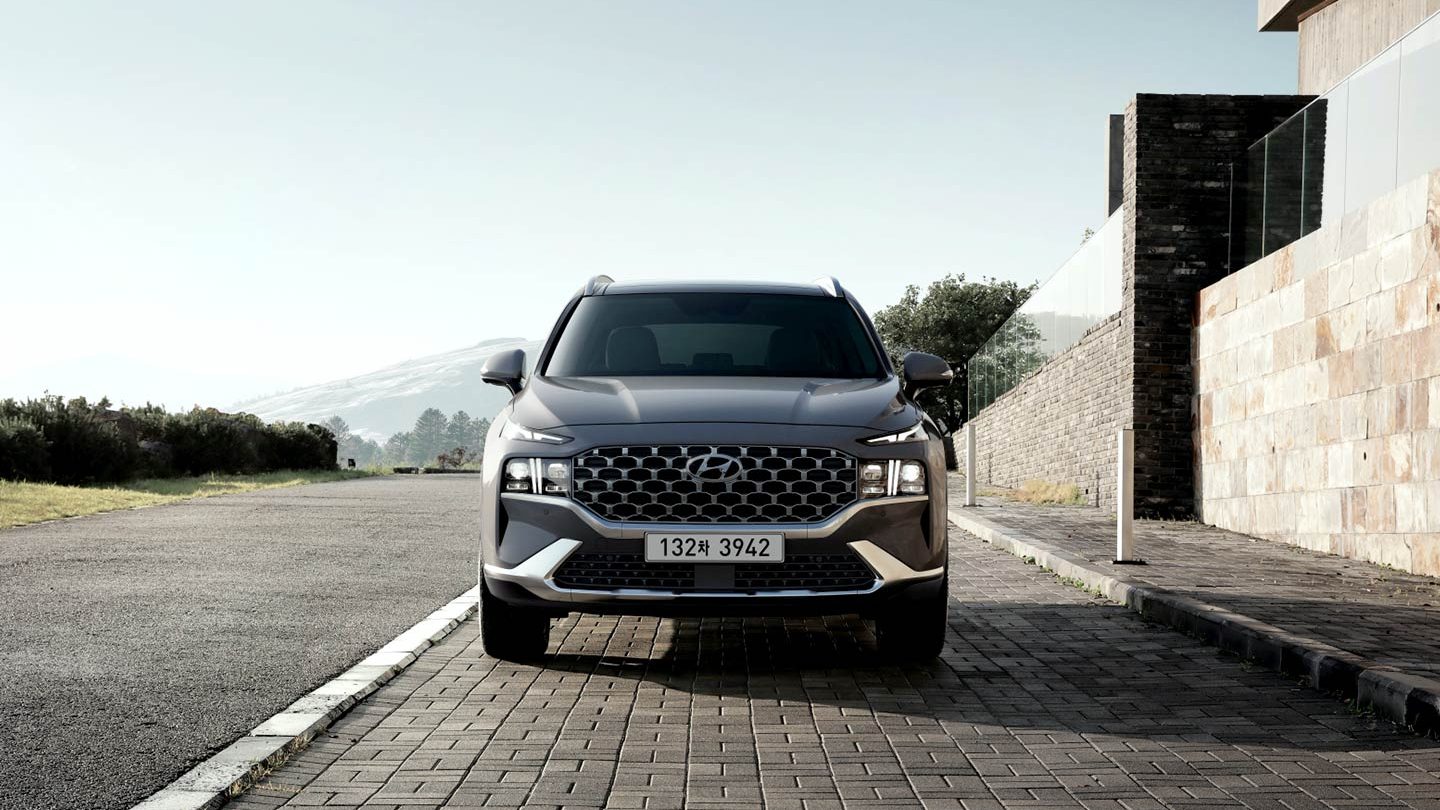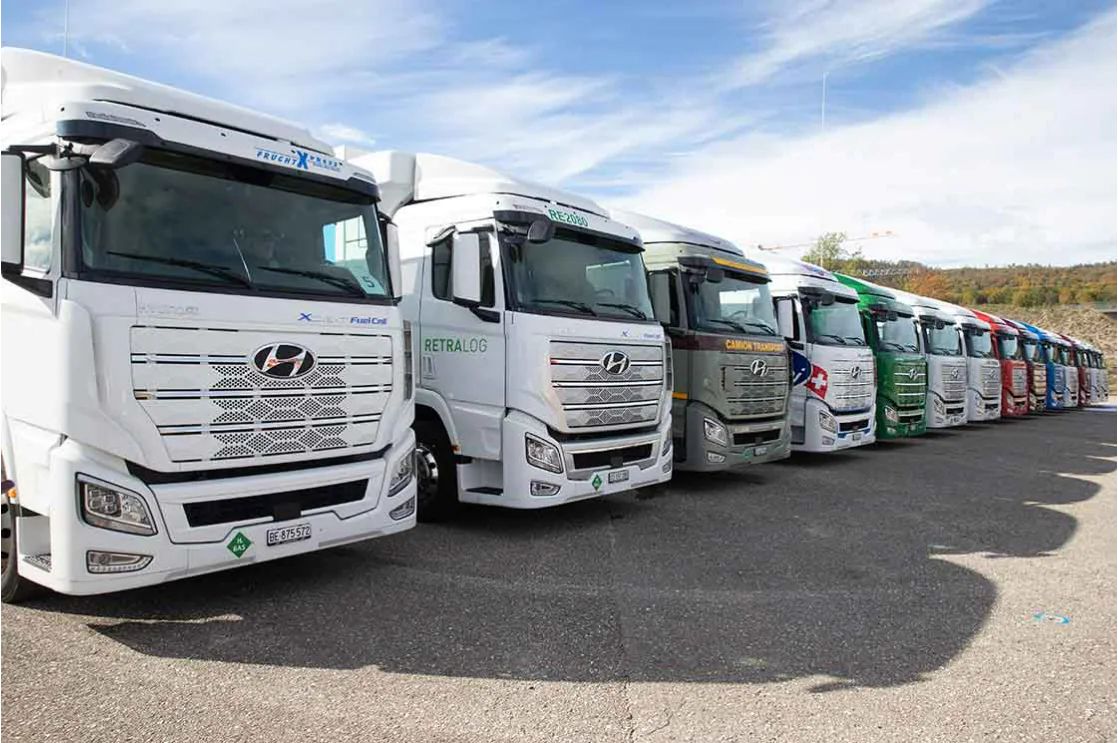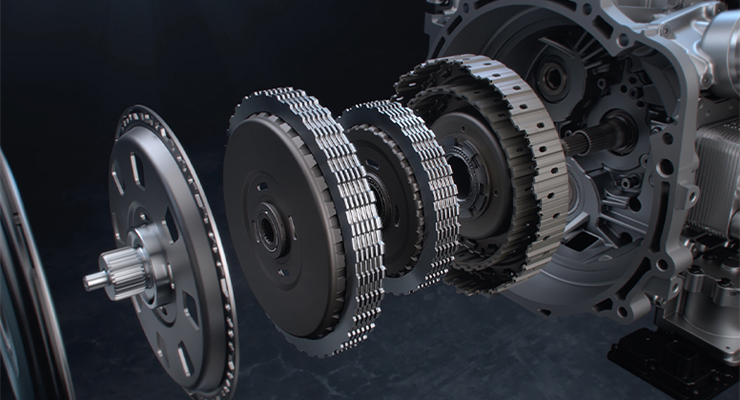The Fourth-generation Santa Fe(TM) came back as ‘The New Santa Fe’ after a few changes. Commonly, when cars go through a minor model change, they change the face and the rear design a little bit. But Santa Fe did not.
The biggest change is that the platform changed. The new platform allows for significant improvements in performance, handling, fuel efficiency, and safety. The platform usually remains when facelifting, but Hyundai Motor Company not only changed a platform but also showcased a bold and distinctive new design as well as a range of new technology and safety features.
So, the facelift became almost a different generation. Jae-Jun Lee, a research engineer (PM) at Hyundai Motor Company, talks about the details.
Be the first Hyundai SUV to house the new platform
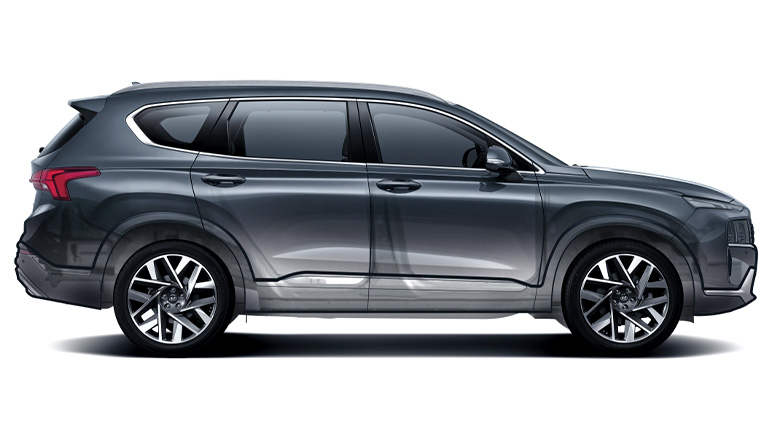
The core change, of course, would be the new platform. It is quite rare for automakers to implement a whole new platform for a facelift model because they need to maintain the original looks that the predecessors featured.
Even so, the New Santa Fe features the next-gen platform. Research engineer Jae-Jun Lee tells us why.
“We used the new platform starting from the Eighth-generation Sonata(DN8) released last year. The biggest advantage of the new platform is that it offers enhanced safety. Though it was not an easy task, we decided to implement this new platform in the New Santa Fe for the first time as a facelift model. This is because we believe this signature family SUV with the new platform could better symbolize our core value.”
Speaking of the Eighth-generation Sonata(DN8), Insurance Institute for Highway Safety (IIHS) gave it ‘Top Safety Pick’, proving its world-class collision safety. Lee explained, “the New Santa Fe significantly improved its safety through the use of a multi-load path structure, hot stamping, and the integration of a super high-tensile steel plate.”
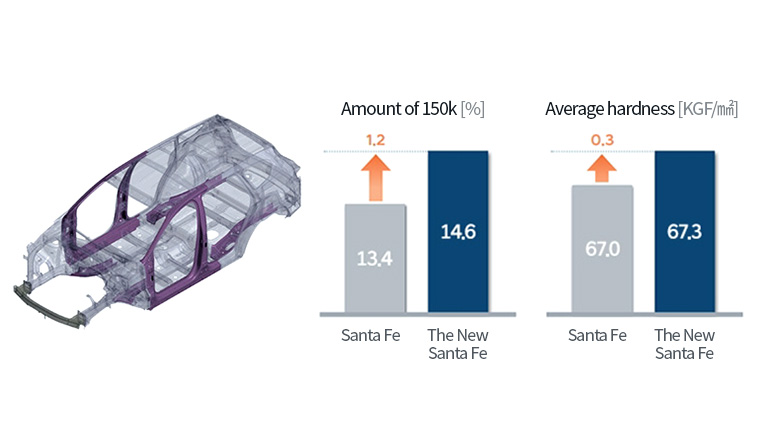
“The platform optimizes the body structure and delivers an improvement in collision safety through the use of a multi-load path structure and super-high-tensile steel plate. The sophisticated multi-load path structure increases the energy that the vehicle absorbs in collisions. And we used 1.2% more of the super-high tensile steel plate(150kgf/㎟), 14.6% in total, the average hardness increased by 0.3%.”
Family-friendly Safety Features
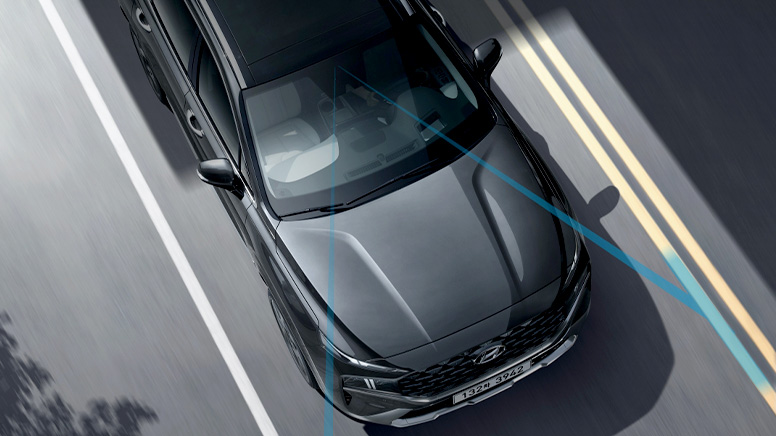
The New Santa Fe also offers state-of-the-art safety features. These are added to the usual features, such as Forward Collision-Avoidance Assist (FCA), Lane Keeping Assist (LKA), Blind-Spot Collision-Avoidance Assist (BCA), Driver Attention Warning (DAW), Navigation-based Smart Cruise Control (NSCC), Lane Following Assist (LFA), Highway Driving Assist (HDA).
For instance, HDA now gets activated not only on highways but also on vehicle-only roads. Also, the improved FCA can recognize not only other vehicles and pedestrians but also bicycles and cars from the other side of an intersection. And there are still more.
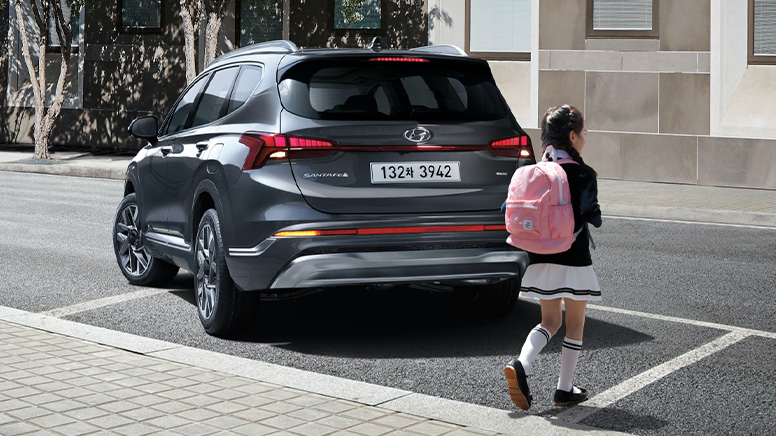
“Parking Collision-Avoidance Assist (PCA) is definitely one of the new features the New Santa Fe offers. PCA uses a rearview camera and sensors to detect obstacles when reversing, providing a warning, and applying the brakes, if necessary, to avoid a collision. Remote Smart Parking Assist (RSPA) enables the driver to move the New Santa Fe forward or backward by using the key, without being in the car,” explained Lee.
World’s First Technology for a Convenient Ride
The New Santa Fe has additional convenience features for even more comfortable driving. ‘Driver Recognition Smart Cruise Control’ would be one example.
Usually, there is more than one driver who gets to drive a family SUV. One might want to drive fast, while the other one wants a safe and comfortable ride. Then each driver would need to select a mode to change the settings. This is indeed not quite convenient since the driver had to change each setting every time he/she sits behind the wheels.
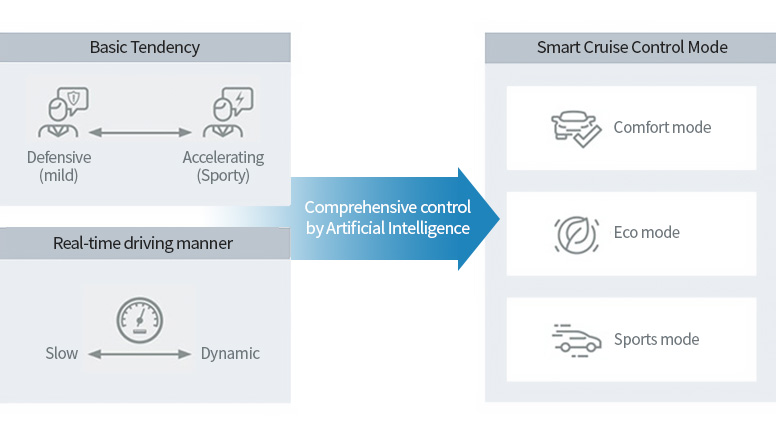
On the other hand, ‘Driver Recognition Smart Cruise Control’ changes the settings automatically. This would be a perfect feature for such a family SUV,” says Jae-Jun Lee.

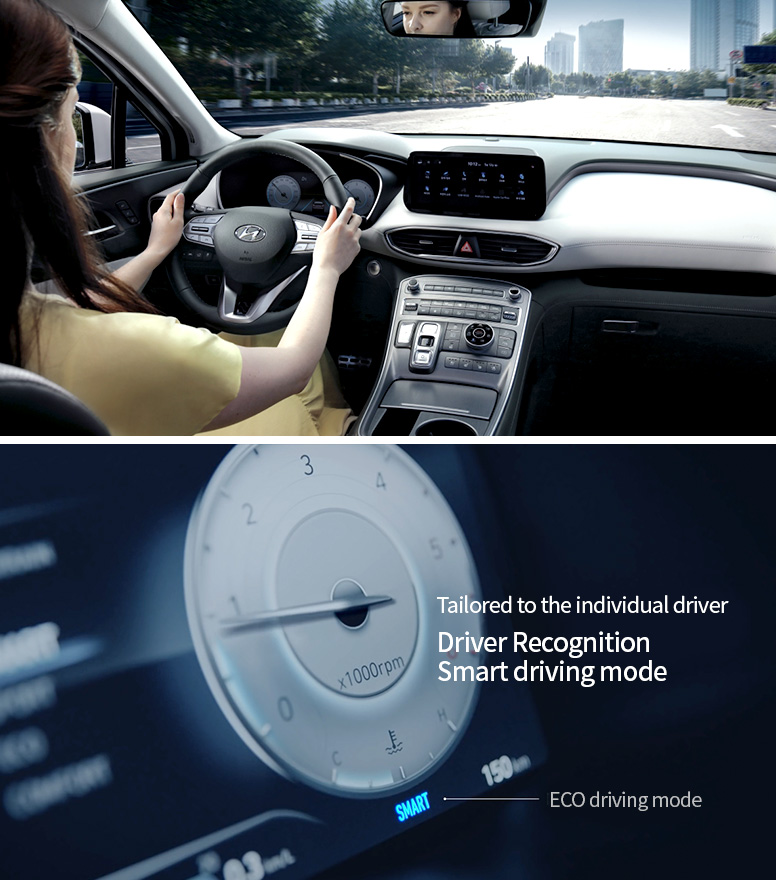
“To ‘learn’ the driver’s core tendencies, SCC uses sensory information from the system. And once culled, these data are sent back to the system, which filters through the data to identify the driver’s usual following distance, acceleration tendencies, and response rate. The identified tendencies serve as the foundation of the cruise control mode that is now tailored to the individual driver.”
Newer Infotainment System
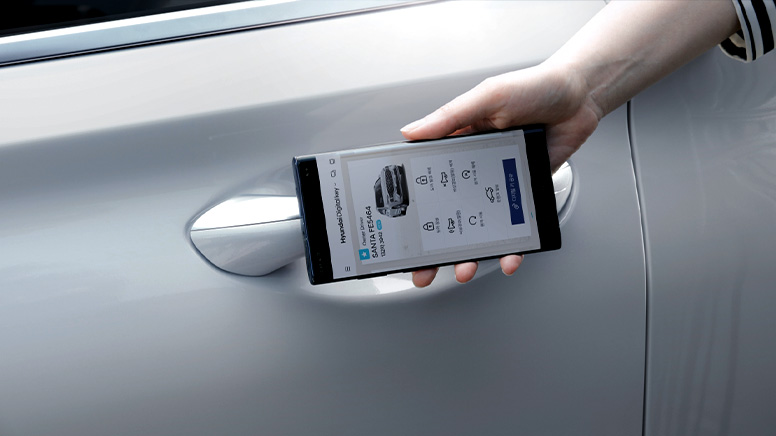
The New Santa Fe is equipped with Hyundai Digital Key, which allows the driver to lock and unlock the car using a smartphone. When you unlock the door with the digital key, the system would automatically adjust the settings including seat, steering wheel, side mirrors, HUD position, and even the driver’s favorite radio channels and dashboard interface settings. And of course, the system activates the smart driving mode that recognizes each driver.
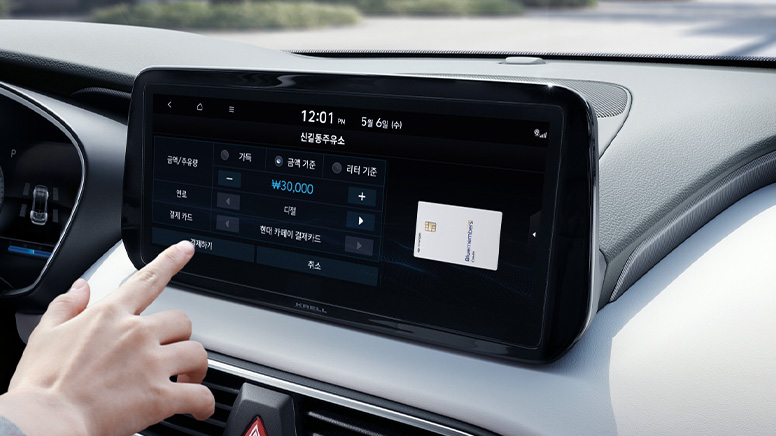
With the new individual profile feature of the New Santa Fe, the height and angle of the driver’s seat can be adjusted to fit the individual needs.
The wider display is also a catch. The 12.3-inch full LCD cluster and the 10.25-inch navigation improves convenience by huge.
“The new infotainment system houses the new Graphic User Interface, Car To Home IoT system, in-car payment system(Hyundai Car Pay), and final destination guidance system. Especially, Car To Home IoT system monitors and controls electric objects at home. You can turn on the home AC even before you arrive home, for example. Meanwhile, Hyundai Car Pay lets you pay for the gas through the display, which can be more useful during the social distancing.”
New Powertrain, New Performance
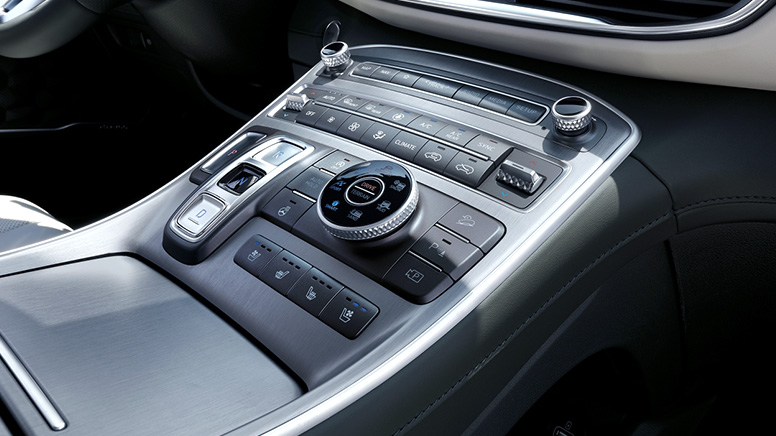
Instead of the usual 8-speed auto transmission using a torque converter, customers will be able to choose between the new 2.2l ‘Smartstream’ diesel powertrain and 2.5l turbo gasoline engine, which have been updated to achieve improvements in fuel efficiency and performance. The dual-clutch transmission also enhances driving performance.
“The newly developed 8-speed wet double-clutch transmission minimized the weaknesses of the original DCT, offering comfortable yet sporty driving performance. Its high fuel-efficiency will make family customers even happier on their way to travel.”
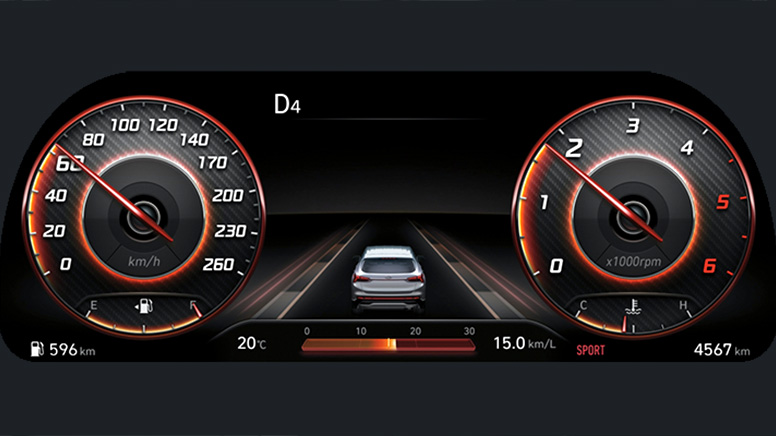
Both the diesel engine already revealed and the gasoline turbo engine that is about to be showcased later this year, offer enhanced driving performance. Speaking of the diesel engine, the 0→100km/h acceleration time has decreased by 0.3 seconds compared to its predecessor.
“Enhanced acceleration performance is not just good for those who want dynamic steering. If you want comfortable driving, you would also need powerful acceleration performance.”
Enhanced Agility & stability: The Next-gen Platform
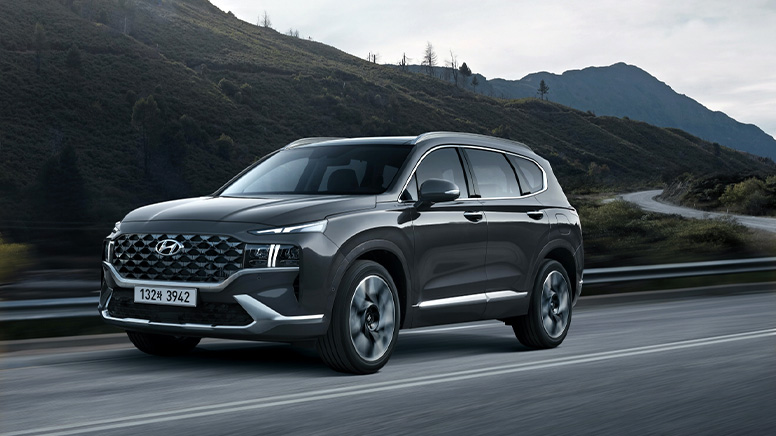
The New Santa Fe improved its driving stability and agility, thanks to its platform that can work with both sedans and SUVs. Changing sub-frames that support the front suspension is one example.
The next-gen platform again changed the shape of the subframe, from an H-shape frame to a pound-shape one. Also, the rear cross member bushing has improved to control road surface vibrations using fluid. The subframe would efficiently absorb the impact from the tires and suspension for a smoother, comfortable ride.
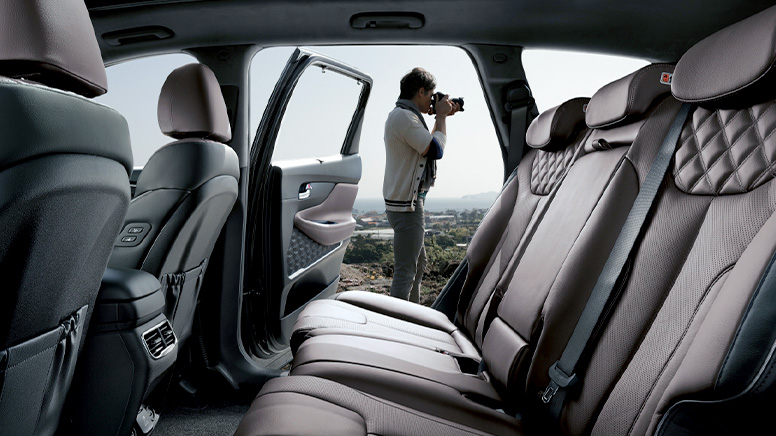
Improved ride comfort, handling, and stability are achieved through key developments in the suspension geometry of the New Santa Fe. The biggest change sees the rear shock and the mount moved upright from an angled position. The 20-inch wheels also help driving stability, and most of all, the stronger and lighter platform guarantees the New Santa Fe to be agile.
The new platform made the vehicle – diesel model – 3 percent lighter. With the lightweight body and the powerful new powertrain together make the SUV much more rhythmic.”
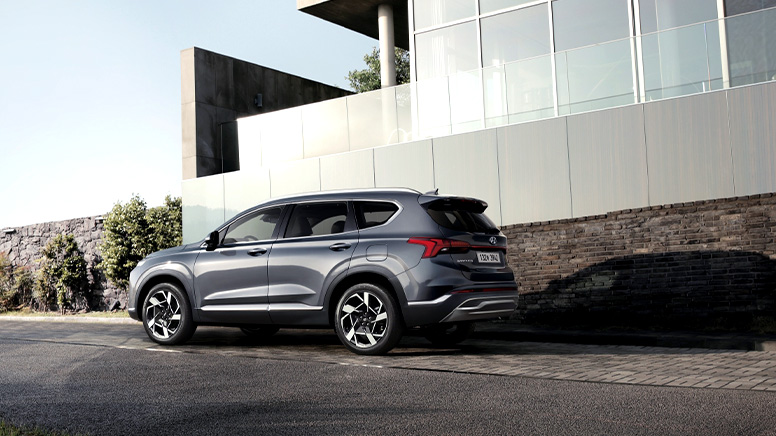
Since 2000, Santa Fe has been leading the mid-size SUV market. It offers many more new features than most of the ‘facelifted’ models do. New powertrain, new platform, and the new safety and convenience features are proof that the New Santa Fe has evolved.
